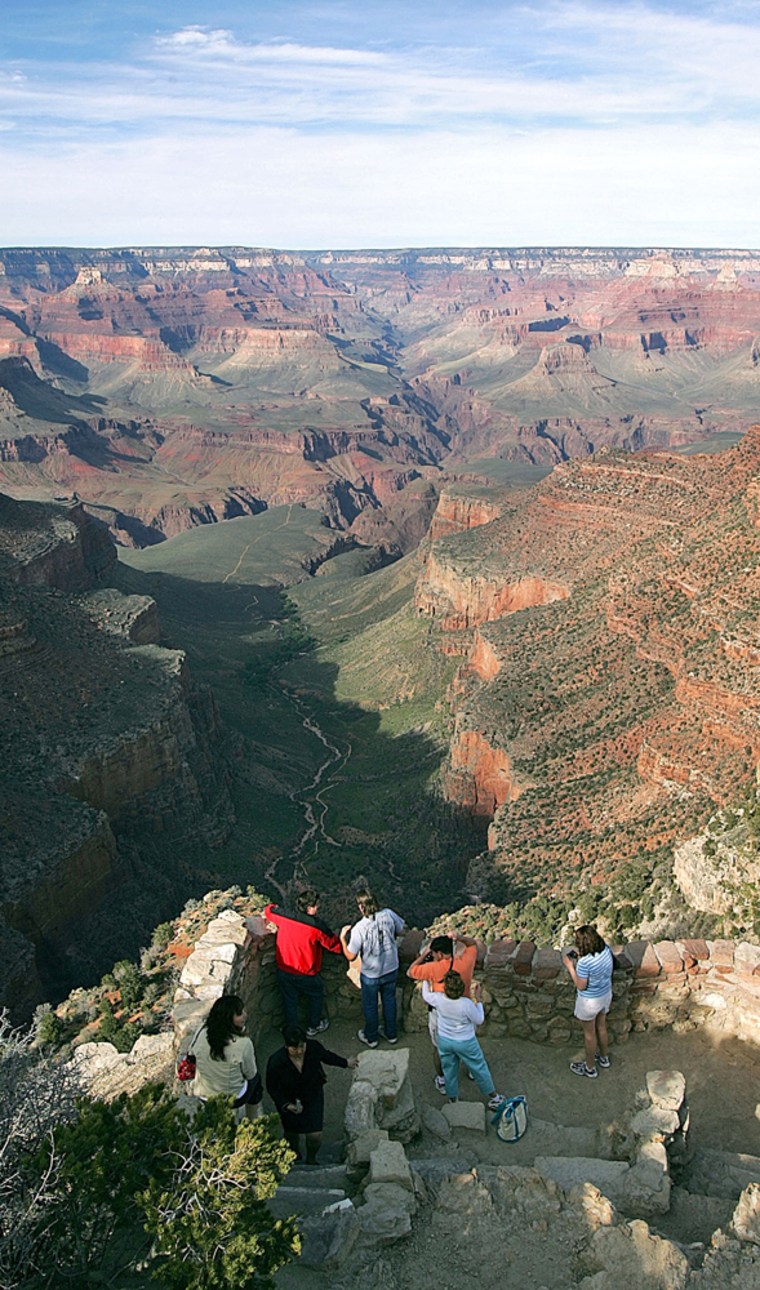Wal-Mart, the world’s largest retailer, pledged Tuesday to spend $35 million compensating for wildlife habitat lost nationwide beneath its corporate “footprint.”
Acre for acre, Wal-Mart Stores Inc. said it would buy an amount of land equal to all the land its stores, parking lots and distribution centers use over the next 10 years. That would conserve at least 138,000 acres in the United States as “priority” wildlife habitat.
The money will go to the National Fish and Wildlife Foundation, a private nonprofit group created by Congress in 1984 to leverage federal dollars for conservation projects, including 312,000 acres in Maine alone.
“We introduced the concept of the offset program to Wal-Mart last year,” said Max Chapman Jr., the foundation’s chairman. “They were quick to say ’yes,’ and Wal-Mart’s leadership is raising the bar in conservation.”
It’s the first time any U.S. corporation has pledged such an arrangement, according to Interior Department officials, who will help decide which places to conserve. Interior Secretary Gale Norton said she hopes the deal becomes a model for other companies.
“The ultimate purpose is to create a grazing and restoration plan for the West,” said Larry Selzer, president of The Conservation Fund, based in Arlington, Va. “No other company has stepped forward with that type of a bold initiative.”
But the Sierra Club remained skeptical. “Wal-Mart thinks it can paint over its record with a nice shade of green, but that won’t hide its true colors,” said Eric Olson, an anti-sprawl campaigner for the group.
Full-page ads
The action helps Wal-Mart burnish its green credentials, just ahead of Earth Day on April 22. The company bought full-page ads in Tuesday’s editions of at least 20 newspapers touting its new habitat program.
Wal-Mart has come under scrutiny over its labor practices and how its stores affect communities and competing retailers. Last month it paid a record $11 million to settle federal charges of employing hundreds of illegal immigrants.
Wal-Mart also settled a Clean Water Act violation last year by paying a $3.1 million fine for excessive storm water runoff at construction sites. It agreed to improve runoff controls at more than 200 sites each year where the company builds stores. In 2001, Wal-Mart and some contractors reached a similar settlement and paid a $1 million penalty.
With a quarter-trillion dollars in annual sales, Wal-Mart employs 1.6 million people at 3,600 U.S. stores and 1,570 stores internationally.
The foundation plans to raise $35 million to match the Wal-Mart money, but said it would start off by putting $8.8 million from Wal-Mart toward a $20.5 million project to conserve land in five locations:
- Catahoula National Wildlife Refuge in Louisiana: Buying privately owned land to expand the refuges by 40 percent to 6,098 acres.
- Sherfield Cave/Buffalo National River in Arkansas: Adding 1,226 acres of bat habitat.
- North Rim of the Grand Canyon in Arizona: Buying two private ranches with 1,259 acres.
- Squaw Creek in Oregon: Buying a conservation easement on a private ranch to protect 1,120 acres along a tributary of the Deschutes River to aid salmon and steelhead fish populations.
- Downeast Lakes region of Maine: Protecting 312,000 acres around Washington County, including 54 lakes and 1,500 miles of river and stream shoreline.
Grand Canyon connections
The North Rim project, backed by a $1 million Wal-Mart grant, aims to protect almost 900,000 acres of wilderness, including land stretching along 125 miles of the Grand Canyon's North Rim.
Conservationists said the $4.5 million purchase of two private ranches also will help protect more than 850,000 acres that are attached to the land through grazing permits from the North Rim to the Utah line.
The acquisition connects three national monuments, two national recreation areas and eight wilderness areas, shielding them from further development and restoring overgrazed lands to nurture endangered species in the region.
“That’s the beauty of this deal,” said Richard Mayol, a spokesman for the Flagstaff-based Grand Canyon Trust, which will manage the land.
Mayol said the purchase was long desired by conservationists but was becoming increasingly crucial as development moved closer from St. George, Utah, and the Arizona Strip, the northernmost part of the state cut off by the Grand Canyon. The trust placed a deposit on the land, giving it until July to officially purchase.
“We felt if didn’t move on this now, the land could be subdivided into miniparcels or sold to developers,” Mayol said.
The Arizona project comprises the Kane and Two Mile ranches. They include desert areas in Marble Canyon; pinon-juniper forests surrounding the Vermillion Cliffs National Monument, where dozens of endangered California condors have been released into the wild; and spruce-fir in the higher reaches of Kaibab National Forest.
The area is also home to the Kaibab squirrel and Apache trout, Mayol said.
